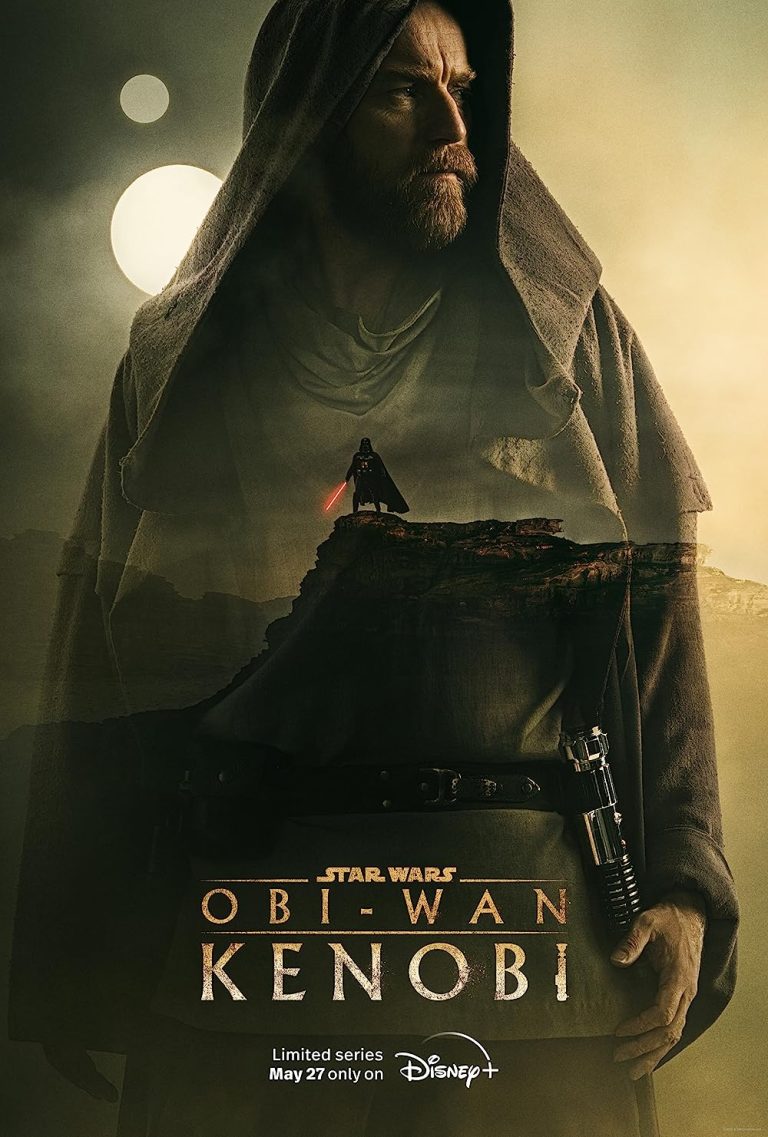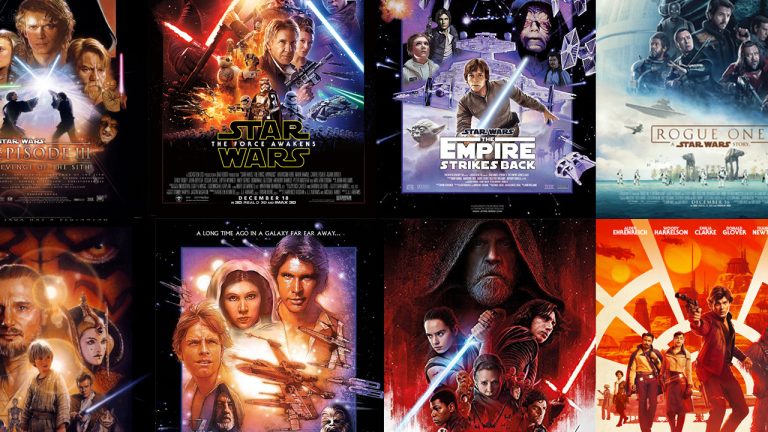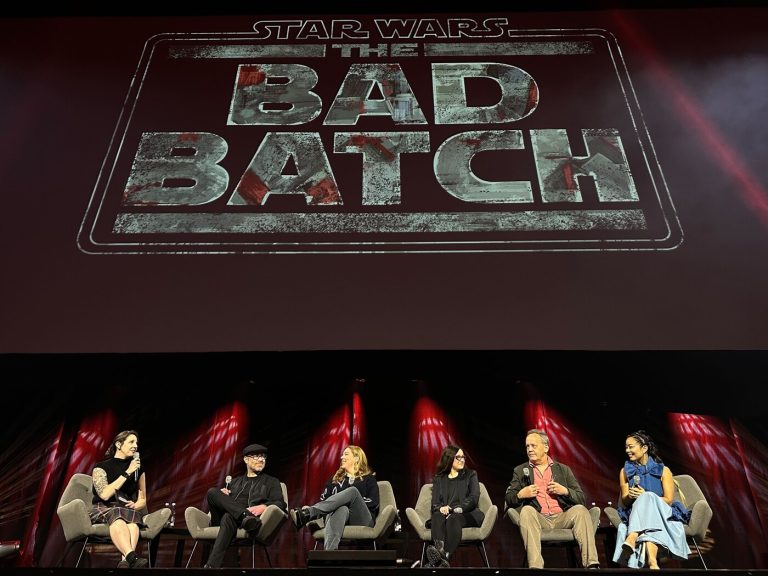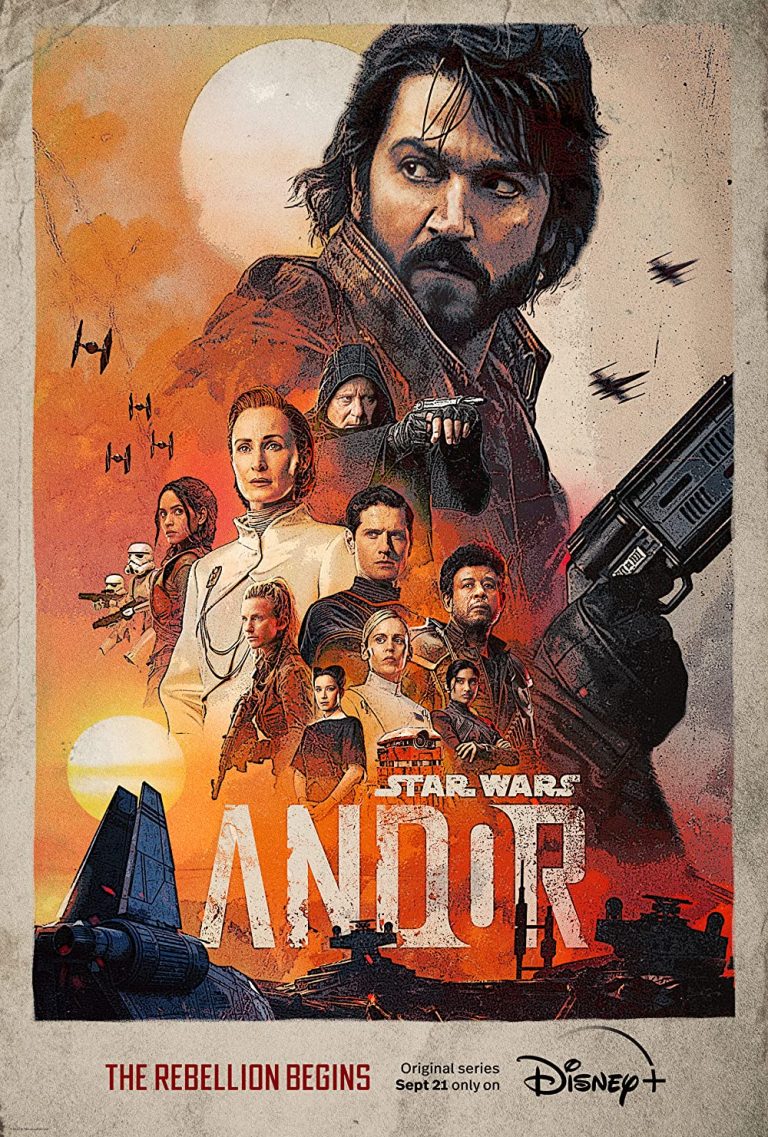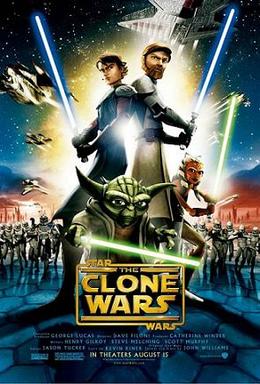How To Watch The Star Wars Movies In Chronological Order?
Hey there, fellow Star Wars fan! So, you’re itching to dive into the epic saga of Star Wars, but you’re not quite sure where to begin? Well, fear not, because I’ve got you covered! In this article, we’ll explore the ultimate guide on how to watch the Star Wars movies in chronological order.
Now, I know what you’re thinking – isn’t it as simple as watching them in the order they were released? Well, my friend, it’s a bit more complicated than that. You see, the Star Wars movies were not released in chronological order, but rather in a jumbled mix of prequels, sequels, and spin-offs. So, if you want to experience the saga in all its chronological glory, we’ll have to do some rearranging. But don’t worry, it’s not as daunting as it sounds! So grab your lightsaber and let’s embark on this intergalactic journey together!
- Start with Episode I: The Phantom Menace.
- Move on to Episode II: Attack of the Clones.
- Continue with Episode III: Revenge of the Sith.
- Watch the standalone film, Rogue One: A Star Wars Story.
- Proceed to Episode IV: A New Hope.
- Follow with Episode V: The Empire Strikes Back.
- Go on to Episode VI: Return of the Jedi.
- Watch Episode VII: The Force Awakens.
- Continue with Episode VIII: The Last Jedi.
- Finish with Episode IX: The Rise of Skywalker.
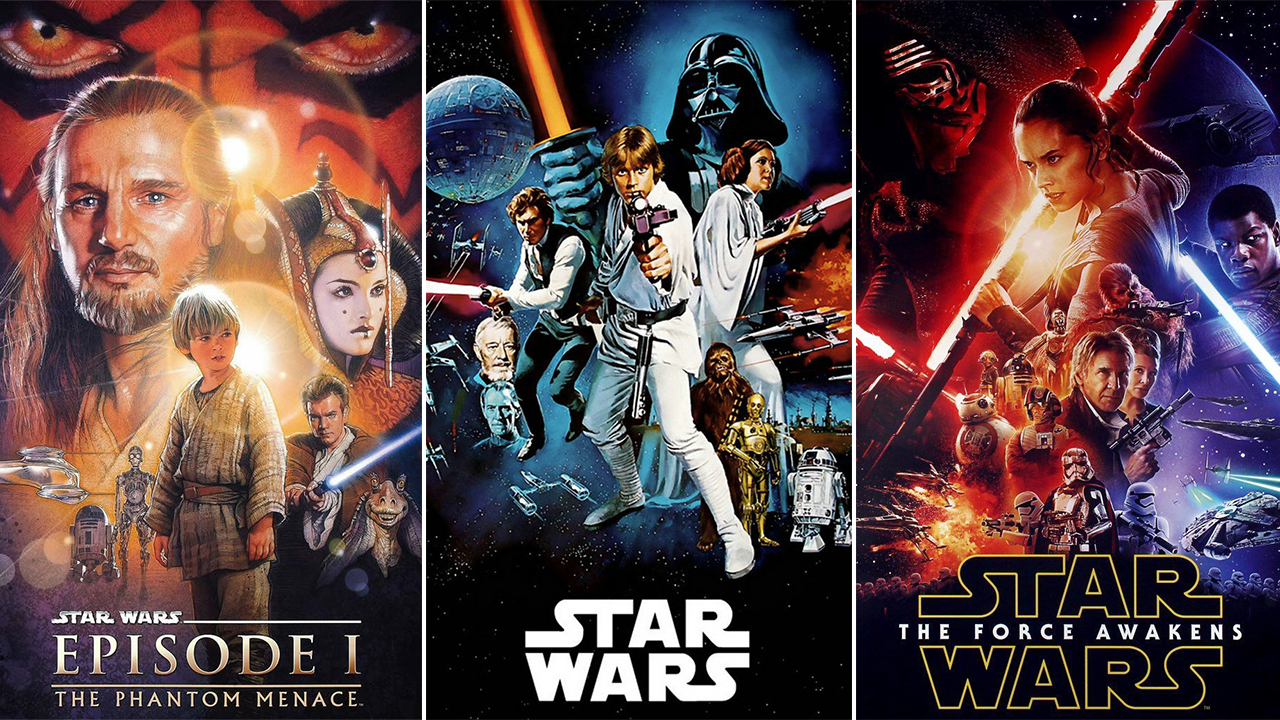
How to Watch the Star Wars Movies in Chronological Order?
Introduction:
The Star Wars franchise has captivated audiences for decades with its epic space opera and iconic characters. With numerous movies, TV shows, and spin-offs, it can be challenging to navigate the Star Wars universe and watch the movies in the correct chronological order. In this article, we will guide you through the proper sequence to watch the Star Wars movies, ensuring you get the full story and experience. So grab your lightsaber and get ready to embark on an epic journey through a galaxy far, far away!
1. The Prequel Trilogy: Exploring the Origins
The Star Wars saga begins with the prequel trilogy, which delves into the origins of the iconic characters and sets the stage for the epic conflict between the Jedi and the Sith. The prequel trilogy consists of three films: “Episode I: The Phantom Menace,” “Episode II: Attack of the Clones,” and “Episode III: Revenge of the Sith.” These movies introduce key characters such as Anakin Skywalker, Obi-Wan Kenobi, and Padmé Amidala, as well as the events that lead to the rise of Darth Vader.
Each film in the prequel trilogy builds upon the previous one, unveiling the complex political landscape of the galaxy and the corruption within the Jedi Order. By watching these movies first, you gain a deeper understanding of the events that shaped the Star Wars universe and the characters’ motivations.
1.1 Episode I: The Phantom Menace
In “Episode I: The Phantom Menace,” we are introduced to young Anakin Skywalker, a talented pilot with a mysterious connection to the Force. The film explores the political tensions between the Galactic Republic and the Trade Federation, as well as the rise of Sith Lord Darth Maul. It also showcases the Jedi Council and their role in maintaining peace in the galaxy.
Throughout the movie, Anakin’s journey begins, and we witness his relationship with Queen Amidala and his fateful encounter with Jedi Master Qui-Gon Jinn. “The Phantom Menace” sets the stage for the events that will unfold in the subsequent films, making it an essential starting point for watching the Star Wars saga in chronological order.
1.2 Episode II: Attack of the Clones
“Episode II: Attack of the Clones” takes place ten years after the events of “The Phantom Menace.” Anakin Skywalker is now a grown Jedi Knight, assigned to protect Senator Padmé Amidala. The film explores the growing tensions between the Republic and the separatist movement led by Count Dooku. Additionally, it delves into the forbidden love between Anakin and Padmé, laying the groundwork for the tragic events that will unfold in the next installment.
Throughout “Attack of the Clones,” we witness the clone army’s creation, Anakin’s training under Jedi Master Obi-Wan Kenobi, and the rise of the Sith. The film sets the stage for the epic battle between the Jedi and the Sith, setting the wheels in motion for the ultimate downfall of Anakin Skywalker and the rise of Darth Vader.
1.3 Episode III: Revenge of the Sith
The final film in the prequel trilogy, “Episode III: Revenge of the Sith,” is a pivotal chapter in the Star Wars saga. It depicts the fall of Anakin Skywalker and his transformation into Darth Vader. The film explores the events leading up to the Clone Wars’ conclusion, the rise of Emperor Palpatine, and the destruction of the Jedi Order.
“Revenge of the Sith” showcases the emotional turmoil faced by Anakin as he succumbs to the dark side of the Force, betraying his Jedi comrades and embracing his role as Darth Vader. By watching this film, you gain a deeper understanding of the events that set the stage for the original trilogy and the ongoing conflict between the Sith and the remaining Jedi.
2. The Original Trilogy: A Timeless Classic
The original trilogy is the heart and soul of the Star Wars franchise. These three films, released between 1977 and 1983, introduced audiences to the beloved characters of Luke Skywalker, Princess Leia, and Han Solo. The original trilogy consists of “Episode IV: A New Hope,” “Episode V: The Empire Strikes Back,” and “Episode VI: Return of the Jedi.”
While the prequel trilogy explores the origins of the Star Wars universe, the original trilogy showcases the timeless battle between good and evil, the redemption of Darth Vader, and the ultimate triumph of the Rebel Alliance. It is recommended to watch these films after the prequel trilogy to fully appreciate the story’s progression.
2.1 Episode IV: A New Hope
The original Star Wars film, “Episode IV: A New Hope,” is where it all began. Set against the backdrop of a galaxy under the control of the tyrannical Galactic Empire, the film introduces farm boy Luke Skywalker, who embarks on a journey to become a Jedi Knight and join the Rebel Alliance.
“A New Hope” showcases the iconic battle between the Rebel Alliance and the Empire, the introduction of the wise Jedi Knight Obi-Wan Kenobi, and the revelation of Luke’s true parentage. This film sets the stage for the epic conflict that will unfold in the subsequent movies.
2.2 Episode V: The Empire Strikes Back
Considered by many as the best Star Wars film, “Episode V: The Empire Strikes Back” is a darker and more complex chapter in the saga. The film explores the ongoing battle between the Rebel Alliance and the Empire, with Luke Skywalker facing his greatest challenge yet.
“The Empire Strikes Back” delves deeper into the mystical aspects of the Force, introduces the enigmatic Yoda, and reveals the shocking truth about Darth Vader’s identity. It is a pivotal film that sets the stage for the final showdown between the forces of good and evil.
2.3 Episode VI: Return of the Jedi
The final film in the original trilogy, “Episode VI: Return of the Jedi,” brings the story to a satisfying conclusion. The Rebel Alliance launches a daring mission to destroy the Empire’s second Death Star, while Luke Skywalker confronts Darth Vader and Emperor Palpatine in a final battle for the galaxy’s fate.
“Return of the Jedi” showcases the redemption of Darth Vader, the fulfillment of Luke Skywalker’s destiny, and the triumph of good over evil. It is a fitting end to the original trilogy and sets the stage for the future of the Star Wars universe.
3. The Sequel Trilogy and Beyond: Continuing the Saga
After the original trilogy, the Star Wars saga continues with the sequel trilogy, which follows the adventures of a new generation of heroes and the resurgence of the dark side. The sequel trilogy consists of “Episode VII: The Force Awakens,” “Episode VIII: The Last Jedi,” and “Episode IX: The Rise of Skywalker.”
While the sequel trilogy can be watched after the original trilogy, some fans prefer to watch it after the prequel trilogy to maintain the chronological order. The choice is yours, and both options offer a unique viewing experience.
3.1 Episode VII: The Force Awakens
“Episode VII: The Force Awakens” introduces a new generation of characters, such as Rey, Finn, and Poe Dameron, who find themselves caught in the middle of a new conflict between the Resistance and the First Order.
The film pays homage to the original trilogy while setting the stage for the new heroes’ journey. It also brings back beloved characters from the original trilogy, such as Han Solo, Leia Organa, and Luke Skywalker, in a nostalgic and exciting way.
3.2 Episode VIII: The Last Jedi
“Episode VIII: The Last Jedi” continues the story of the sequel trilogy, exploring the inner struggles of the new heroes and the legacy of the Jedi. The film delves into themes of redemption, failure, and the balance between the light and dark sides of the Force.
With stunning visuals and unexpected twists, “The Last Jedi” challenges the conventions of the Star Wars saga, offering a fresh and thought-provoking take on the epic conflict between good and evil.
3.3 Episode IX: The Rise of Skywalker
The final film in the Skywalker saga, “Episode IX: The Rise of Skywalker,” brings the epic story to its conclusion. As the Resistance faces its greatest challenge yet, Rey must confront her own lineage and fulfill her destiny as the last hope for the galaxy.
“The Rise of Skywalker” ties together the threads of the entire saga, delivering an epic and emotional finale that celebrates the enduring legacy of Star Wars.
4. Standalone Films and TV Shows
In addition to the main saga, the Star Wars universe offers a wealth of standalone films and TV shows that expand upon the lore and explore different aspects of the galaxy. These include “Rogue One: A Star Wars Story,” “Solo: A Star Wars Story,” and various animated series such as “Star Wars: The Clone Wars” and “Star Wars Rebels.”
While not essential to understanding the main story, these standalone films and TV shows provide additional context and deepen the overall Star Wars experience. They can be enjoyed at any point after watching the main saga.
5. Conclusion:
Watching the Star Wars movies in chronological order allows you to fully immerse yourself in the rich and expansive universe created by George Lucas. By following the sequence outlined in this article, you will gain a deeper understanding of the events, characters, and themes that define the Star Wars saga. May the Force be with you!
Key Takeaways – How to Watch the Star Wars Movies in Chronological Order
- Start with Episode I: The Phantom Menace
- Continue with Episode II: Attack of the Clones
- Move on to Episode III: Revenge of the Sith
- Watch Solo: A Star Wars Story
- Finish with Rogue One: A Star Wars Story
Frequently Asked Questions
Are you a Star Wars fan looking to watch the movies in chronological order? Look no further! We’ve got you covered with a step-by-step guide on how to watch the Star Wars movies in the correct chronological order. From the prequels to the sequels, follow this guide to experience the Star Wars saga in the intended timeline.
Question 1: What is the chronological order of the Star Wars movies?
The Star Wars movies can be watched in chronological order, which means starting with the prequels and ending with the sequels. Here is the correct order:
1. Episode I: The Phantom Menace (1999)
2. Episode II: Attack of the Clones (2002)
3. Episode III: Revenge of the Sith (2005)
4. Episode IV: A New Hope (1977)
5. Episode V: The Empire Strikes Back (1980)
6. Episode VI: Return of the Jedi (1983)
7. Episode VII: The Force Awakens (2015)
8. Episode VIII: The Last Jedi (2017)
9. Episode IX: The Rise of Skywalker (2019)
Question 2: Why should I watch the Star Wars movies in chronological order?
Watching the Star Wars movies in chronological order allows you to experience the story as it unfolds in the intended timeline. By starting with the prequels, you get to witness the events that led to the original trilogy. This chronological viewing order can provide a deeper understanding of the Star Wars universe and the character arcs.
Additionally, watching the movies in chronological order can enhance the overall viewing experience and help you appreciate the intricate storytelling and world-building that the Star Wars franchise is known for.
Question 3: Can I watch the Star Wars movies in release order instead?
Yes, you can choose to watch the Star Wars movies in release order instead of chronological order. The release order follows the order in which the movies were originally released, starting with Episode IV: A New Hope and ending with Episode IX: The Rise of Skywalker.
Watching the movies in release order can also be an enjoyable way to experience the Star Wars saga, as it allows you to see how the films evolved over time and how the story unfolded for audiences when they were first released.
Question 4: Are there any other viewing orders for the Star Wars movies?
While the chronological and release orders are the most common ways to watch the Star Wars movies, there are a few other viewing orders that fans have come up with. One alternative order is the “Machete Order,” which suggests watching the movies in the following sequence:
1. Episode IV: A New Hope
2. Episode V: The Empire Strikes Back
3. Episode II: Attack of the Clones
4. Episode III: Revenge of the Sith
5. Episode VI: Return of the Jedi
6. Episode VII: The Force Awakens
7. Episode VIII: The Last Jedi
8. Episode IX: The Rise of Skywalker
This order aims to preserve the surprise reveal in The Empire Strikes Back while also including the prequels to provide backstory. However, it deviates from the strict chronological or release order.
Question 5: Should I watch the spin-off movies as well?
If you’re a dedicated Star Wars fan, watching the spin-off movies can add more depth to your viewing experience. The spin-off movies, such as Rogue One: A Star Wars Story and Solo: A Star Wars Story, expand on specific events and characters within the Star Wars universe.
While not essential to understanding the main saga, these spin-offs can provide additional context and enrich your overall Star Wars journey. You can choose to watch them either before or after the main saga, depending on your personal preference.
Final Summary: The Best Way to Watch the Star Wars Movies in Chronological Order
So, you’ve decided to embark on an epic Star Wars movie marathon and want to experience the galaxy far, far away in chronological order. Well, look no further, because I’ve got you covered! Watching the Star Wars movies in the order they were released can be a bit confusing, but fear not, I’m here to guide you through the correct chronological order that will enhance your viewing experience and make sure you don’t miss out on any important details.
To begin your Star Wars journey, you should start with Episode I: The Phantom Menace. This prequel takes you back to the origins of the saga and introduces you to young Anakin Skywalker, the future Darth Vader. From there, continue with Episode II: Attack of the Clones and Episode III: Revenge of the Sith, as you witness the rise of the Empire and the fall of the Jedi Order.
Once you’ve completed the prequels, it’s time to dive into the original trilogy. Begin with Episode IV: A New Hope, where you’ll meet Luke Skywalker, Princess Leia, and Han Solo as they battle against the evil Darth Vader and the Empire. Then, move on to Episode V: The Empire Strikes Back, which is widely regarded as one of the best Star Wars films. Finally, conclude the original trilogy with Episode VI: Return of the Jedi, as the Rebel Alliance makes their final stand against the Emperor.
Now that you’ve experienced the core of the Star Wars saga, it’s time to explore the sequel trilogy. Start with Episode VII: The Force Awakens, where a new generation of heroes and villains takes the stage. Continue with Episode VIII: The Last Jedi, and finally, wrap up your marathon with Episode IX: The Rise of Skywalker.
By watching the Star Wars movies in this chronological order, you’ll gain a deeper understanding of the story, its characters, and the intricate connections between each film. So grab your lightsaber, prepare for intergalactic adventures, and may the Force be with you as you embark on this epic journey through the Star Wars universe!
Remember, the Force is strong with your search engine optimization skills too. By incorporating relevant keywords and following on-page optimization best practices, your article on how to watch the Star Wars movies in chronological order will not only engage readers but also rank high on Google. May your article reach the top of the search

